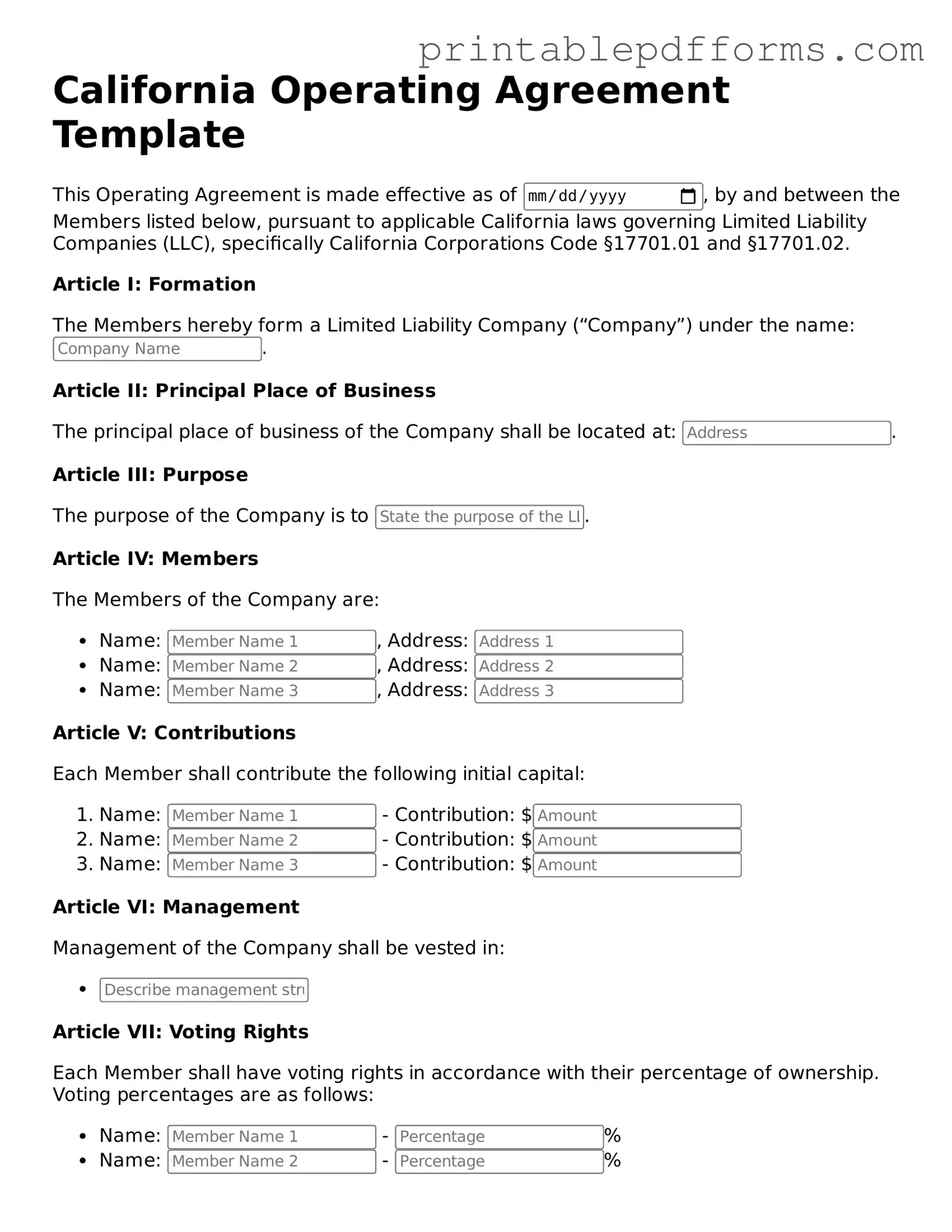California Operating Agreement Document
The California Operating Agreement form is a crucial document for limited liability companies (LLCs) operating in California. It outlines the management structure, member responsibilities, and operational procedures of the LLC. Understanding and completing this form is essential for ensuring compliance and protecting the interests of all members involved.
Ready to get started? Fill out the form by clicking the button below.
Create This Document Online
